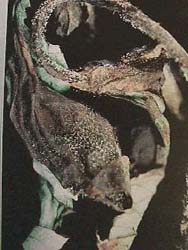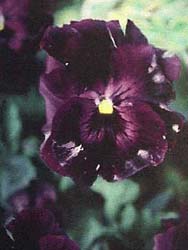Source(s): Nina Eckberg
Identification of Gray mold or botrytis blight on pansy (Botrytis cinerea).
Appearance
Gray to tan spots appear on pansy flower petals following infection. Periods of wet weather and stressful conditions (extreme cold or heat) favor disease development. Leaves and stems of young shoots wilt and die, turning brown to black color. Gray-brown, fuzzy patches (masses of spore) appear, a sign that the gray mold is spreading.
Hosts
Pansy, peony, petunia and geranium are susceptible.
Season
Winter, during wet periods and unfavorable growing conditions.
Damage
Gray mold is an airborne fungus that attacks flowers and damaged or dying tissue. Pansy flower petals discolor and rot. Stems and leaves yellow, then darken, turning slimy. If allowed to spread, the disease will damage the plant.
Integrated Pest Management
Conditions that favor gray mold/botrytis blight are:
- high rates of fertilization
- death of lower leaves
- low light intensity
- frequent watering
- crowded plants
If fertilization is done at the time of planting and supplemented once a month, the plant stress will be less. Remove dead lower leaves so the disease has no food source. Be sure the planting bed is in a sunny area. Allow plants to dry out between waterings. As plants mature and fill the flowerbed, remove plants that are too close together. All of these conditions will stimulate healthy pansy growth without disease.
Comment
If you think you have gray mold/botrytis blight in your pansies, bring a sample to the Extension office for diagnosis.
Resource(s): Common Landscape Diseases In Georgia
Center Publication Number: 59
- Root Rot on Evergreens - September 23, 2013
- Shot-hole Disease - September 23, 2013
- Gray Mold or Botrytis Blight on Pansies - September 22, 2013

